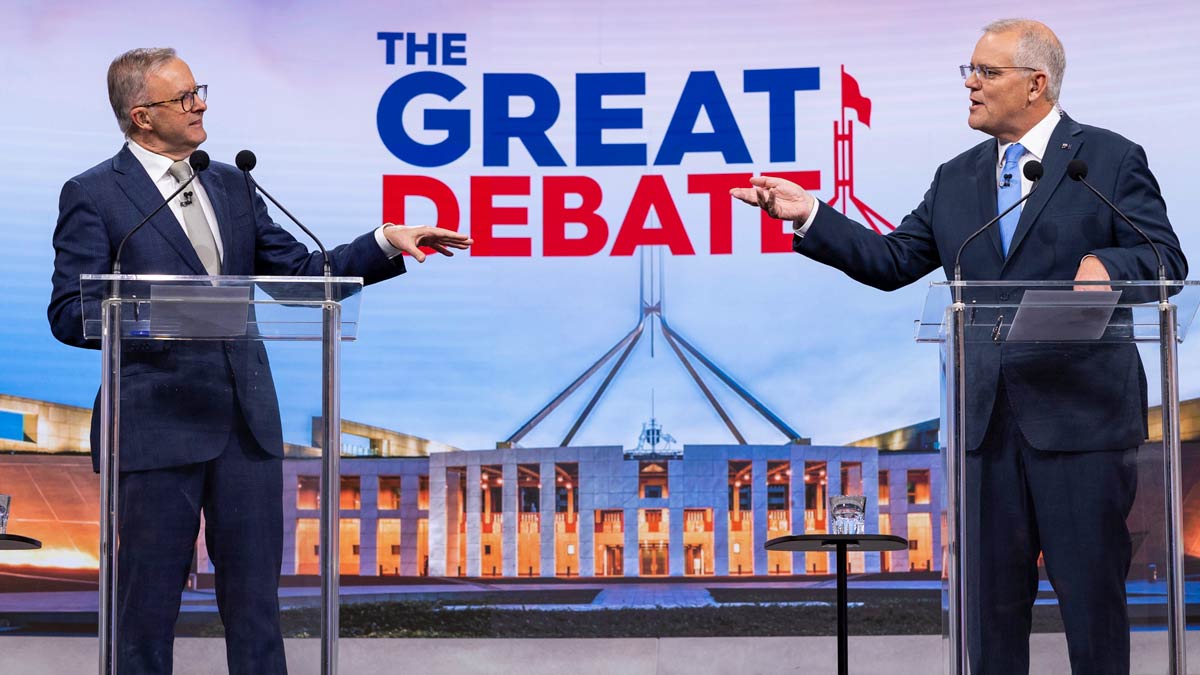Neither of Australia’s major political parties have set climate policies consistent with the Paris Agreement, new analysis shows, leaving the Greens and the collective policies of the ‘teal’ independents to lead the way ahead of the federal election.
The analysis produced by Climate Analytics compares the climate targets and policies of the major political groups ahead of the looming federal election.
The think tank finds that the Morrison government’s current climate policies – and Australia’s official targets – are consistent with more than 3°C of global warming and are “bordering on 4°C.”
“If all governments were to make the same effort as the climate change targets put forward by Australia’s Liberal National Coalition, the world would see global warming of at least three degrees, bordering on four degrees,” Climate Analytics said.
“Under this level of warming we’d see the total destruction of the Great Barrier Reef, and all other tropical reefs such as Ningaloo, also a World Heritage site.”
“Intense heat events that have recently occurred once in a decade could happen almost every year, and highest maximum temperatures are likely to be 3°C warmer than in recent times.”
While Labor’s more ambitious targets would contribute to lower levels of global warming, and are consistent with a 2°C warming target, Climate Analytics says it still put the Albanese-led opposition out of step with the goals of the Paris Agreement.
“The Labor Party’s target of a 43 per cent emissions cut by 2030 is consistent with two degrees of global warming, and hence is not consistent with the Paris Agreement,” Climate Analytics said.
“This position is also not consistent with the survival of the Great Barrier Reef or Ningaloo Reef, and increased heat extremes occurring every five years.”
“Under 2°C of global warming the most extreme heat events that occurred once in a decade in recent times could occur about every three years and would be significantly hotter with the highest maximum temperatures about 1.7°C hotter than the in recent decades.”
Emissions reduction targets being proposed by the Australian Greens (a 74 per cent cut to emissions by 2030) and most of the ‘teal independents’ (a 60 per cent cut by 2030) were found to be aligned with the Paris Agreement goal.
If adopted internationally, they would allow global warming to be kept below 1.5 degrees, the analysis found.

Climate Analytics CEO Bill Hare says Australia has a ‘self-interest’ in stronger global action on climate change, given the effects that are being observed across Australia, with bushfires, floods and droughts already having a devastating impact on some communities.
“Australia has a strong self interest in the world taking sufficient action to limit warming to 1.5 degrees Celsius,” Hare said.
“Exceeding this level would doom the Great Barrier and Ningaloo Reefs to extinction, lead to very substantial reductions in wheat yields, increasingly catastrophic heat and flooding events, as well as posing a major risk to human health and infrastructure.”
“With the IPCC warning that action in the next few years is the last chance we may get to limit warming to 1.5 degrees Celsius we have evaluated the consistency of the major political parties and independent grouping positions for emission reductions by 2030.”
“The magnitude of emission reductions by 2030 are critical to the feasibility of the world reaching net zero by 2050 or earlier. If governments come up with insufficient reductions like those of Australia, then net zero may well be impossible.”
Hare says a reliance on questionable emissions accounting practices, including claiming emissions reductions from avoided land clearing, effectively undermine the targets being adopted by all political groups.
“Setting aside dodgy accounting for deforestation, the picture, in reality, is even worse,” he said.
“Here, the real targets for reducing fossil fuel combustion, industry, transport waste and agriculture translate into reductions in emissions (excluding land-use) of only 11-13 per cent for the LNP, Labor 31 per cent, Teal Independents 50 per cent and Greens 67 per cent.”
The analysis comes as the World Meteorological Organisation warns the world now faces a 50:50 risk that global temperature anomalies will exceed 1.5 degrees within the next five years.
The WMO also warned of a virtual certainty that a new record for global warming will be set before 2026 as greenhouse gas concentrations continue to rise.










